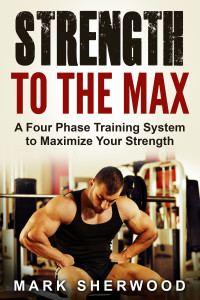Training State
 I believe that performing workouts consisting of a correct physiological training state are the key to effective training. Utilizing the correct training state is based on understanding when you have reached your capacity for strong training without exceeding it. Strong training consists of three basic elements which include:
I believe that performing workouts consisting of a correct physiological training state are the key to effective training. Utilizing the correct training state is based on understanding when you have reached your capacity for strong training without exceeding it. Strong training consists of three basic elements which include:
- Strong reps
- Strong sets
- A strong lifting motion
Strong Reps
Strong reps can consist of forceful reps that can be repeated using a steady even rep pace. The maximum number of strong reps that can be done with a given weight for an exercise is called your strong rep max. When rep pace slows down due to fatigue, weak reps are being done.
Strong Sets
Strong sets are sets that are done when a muscle group is at full strength. Weak sets are being done when a muscle group fatigued and is no longer at full strength.
A Strong Lifting Motion
A strong lifting motion is being done as long as you have the ability to perform a lift with a smooth nonstop lifting motion. I refer to the maximum weight that you can use while maintaining a strong lifting motion as your single rep training max. A weak lifting motion occurs when weights are heavy enough to cause grinder reps, jerking, or pauses in the lifting motion.
Reach Your Capacities, Don’t Exceed Them
In order to optimize strength training workouts, push to your capacity of strong training, but don’t exceed your capacities. When performing workouts, it’s important to understand that two different people can do the exact same workout in terms of sets, reps, and weight, but even though they are doing the same workout, one person may be way off in terms of training to the limit of their capacities, and the other person may be right on target.
The person who is off neglects to train with precision in regard to their strong rep max, their single rep training max, and their capacity for strong sets. They are merely trying to meet a quota of sets and reps while either falling short, or exceeding their capacities. The other person nails it with precision in terms of pushing to their strength specific capacities without exceeding them. The first person believes that if they simply do a predetermined number of sets and reps that they’ve been told to do, or that someone else is doing, they have done the right workout, but they are wrong, wrong, wrong. The second person does the same sets and reps, but is focused far more on achieving a precise physiological training state, instead of doing a required number of sets and reps to achieve results.
Work out According to your Physical Capacities
When sets and reps are listed for a workout, the sets a reps should not be rules that can never be adjusted (What I’m about to say is important, so be careful to get this part). If there is a rule, it is to train to the limit of your strength specific capacities without exceeding them, and you may need to add or subtract sets within a workout to fit your capacities. For example, you may need to add or subtract the number of warm up sets or work set that you are doing. It may be that you may need to adjust the amount of weight to fit the amount of reps you are doing so that you finish your set right at the limit of your capacity for strong reps. If these changes, or any changes, are right for your training capacities, then make them. The important concept is to develop a physical awareness of your personal capacities, and to let that be the ultimate guide for the amount of sets, reps, and weight to use. Best of training to you.
This article is based on an excerpt from the book, Strength To The Max. For more information about this book, please click on the cover image below:

